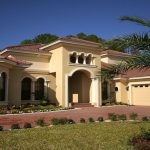Did you ever think why today buyers want a healthy homes

Today buyers want a healthy homes
With growing concern over soaring allergies and child asthma rates, more Americans are taking a closer look at their homes and how they may be affecting their health. It’s prompted some homebuyers to look at the amount of toxins a home may be emitting as well as its air quality.
In 2009, a survey conducted by homebuilder Meritage Homes revealed a growing concern among homeowners about the impact a home could have on their health. It motivated the builder in 2014 to add features to improve airflow and reduce toxins in its homes, such as improved air filters, whole-house water treatment and low-emitting materials.
It also prompted more salespeople to ask buyers about any respiratory issues when helping them to locate the right home. In the U.S., 17.7 million adults and 6.3 million children have asthma and more than 50 million Americans suffer from allergies.
Evolutionary Home Builders has made building a healthy home its primary focus. The company’s Evolutionary Pro Homes are marketed to meet the physical needs of professional athletes and designed to provide more oxygen, fresh air and negative ions than traditional homes. The builder also claims it reduces the levels of toxins and allergens in its homes. Brandon Weiss, the founder of the company, says doctors have shown, via pre- and post-occupancy, how improved indoor environments can enhance performance.
More homebuilders are considering whether healthier building standards should be added to their homes too. However, the extra costs associated with building this way have been a big area of concern. However, costs are heading down, which has prompted more builders to consider what elements they can offer.
Some builders are opting to become a partner in EPA’s voluntary Indoor airPLUS certification program. Launched in 2009, the certification program includes construction specifications that protect indoor air quality. It recognizes builders who go “above and beyond” building standards in creating healthier indoor environments, says Bob Axelrad, EPA senior policy adviser for indoor environments.
Participants see indoor air quality and health as “the next important value proposition that they have to offer homebuyers,” Axelrad says.
Other programs to help homeowners determine the health of a home include WELL Building Standard, LEED for Homes, International Living Future Institute, the Healthy Building Network and BuildingGreen’s Health Product Declaration Open Standard, Greenguard, and Cradle to Cradle.
“Overall, health is a strong purchase driver, and there’s increasing concern about indoor air quality,” says Lee Ann Head, Shelton Group’s vice president of research. “But there’s work to be done to better communicate about the topic.”
Meritage Homes says at first they promoted a home’s health-based benefits along with energy efficiency. But they found the message wasn’t resonating. Buyers also were getting intimidated by the jargon, such as MERV (maximum efficiency rating value) air filters and low-VOC (volatile organic compound) materials. Now, its sales team focuses on “reminding consumers that they can and should have a better functioning home than they’ve had,” says C.R. Herro, vice president of energy efficiency and sustainability for Meritage.
Indeed, “we’re starting a conversation to get people to realize, wouldn’t it be great to have fresh air to breathe? Wouldn’t it be great to have a new house that doesn’t smell like a new car?” says Carl Grimes, managing director of the Hayword Healthy Home Institute. “It’s possible, and it doesn’t have to cost much more or even more to build a lot of these features into homes now.”
Source: Florida Realtors








